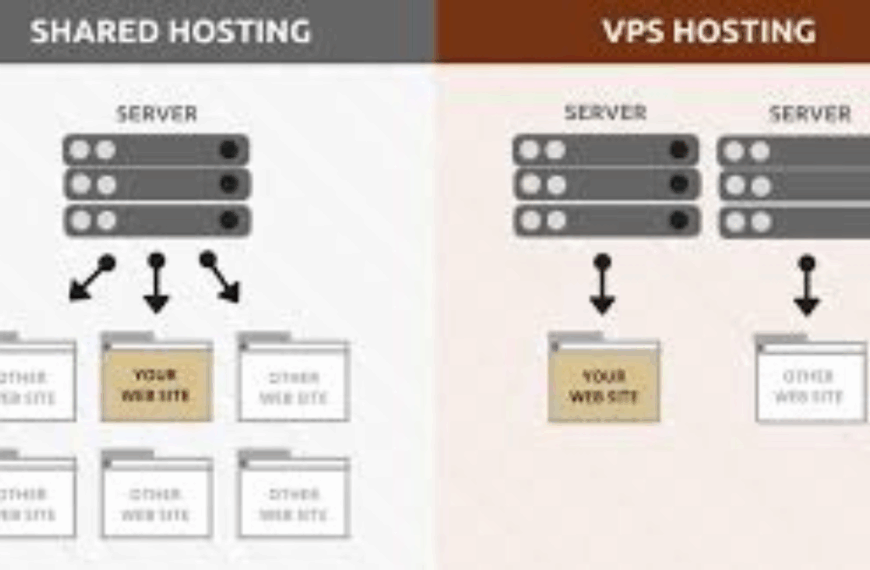Last updated on November 23rd, 2025 at 08:04 pm

PayPal phishing attacks target millions of UK users daily with fake emails and websites. These sophisticated scams are becoming increasingly difficult to detect.
If you’re running a website or blog, protect your audience from these threats. Consider partnering with TrueHost UK for secure hosting, emails, website building and domains solutions that prioritize cybersecurity.
You know what? Last week, my neighbour received a legitimate-looking PayPal email about account suspension. The panic was real until we spotted the scam signs.
What Are PayPal Phishing Attacks?
PayPal phishing attacks are fraudulent attempts to steal your personal information. Cybercriminals impersonate the legitimate payment platform to trick users.
These scammers cast a wide net, hoping to catch unsuspecting victims. They want your login credentials, bank details, and personal data.
Think of it like digital fishing. Instead of using bait to catch fish, scammers use fake emails. They hook your sensitive information through deceptive websites.
Read Also: What is Phishing and How to Prevent Phishing
The numbers are staggering across the UK. According to the UK’s National Cyber Security Centre, phishing attacks increased 220% since 2020. PayPal ranks among the most impersonated brands.
Why PayPal Makes Such an Attractive Target

PayPal’s massive user base makes it irresistible to cybercriminals. The platform has over 400 million active accounts worldwide.
Millions of UK users trust PayPal for online payments. This trusted reputation works against users in phishing contexts.
When you see that familiar blue and white logo, your guard drops. Scammers exploit this trust ruthlessly to steal information.
The financial incentive is obvious for criminals. Successfully compromising a PayPal account gives access to:
- Linked bank accounts
- Credit cards
- Stored payment methods
- Transaction history
- Personal identification details
It’s like getting the keys to someone’s entire financial kingdom.
Common Types of PayPal Phishing Attacks Targeting UK Users

1. Email Phishing
Email phishing remains the most common attack method. These messages arrive with urgent subject lines designed to panic users.
Common subject lines include:
- Your PayPal account has been limited
- Suspicious activity detected
- Verify your account immediately
- Payment authorization required
The emails contain convincing PayPal branding with logos and formatting. However, they always include calls-to-action directing you to fake websites.
2. SMS Phishing (Smishing)
Text message phishing has exploded across the UK recently. Mobile banking adoption made this attack vector more effective.
These messages are short, urgent, and trigger immediate action. A typical smishing attempt might read: “PayPal Alert: Unusual activity detected. Click here to verify: [malicious link]”
3. Voice Phishing (Vishing)
Vishing attacks involve actual phone calls from scammers. They impersonate PayPal customer service representatives convincingly.
These calls often follow up on email or SMS attempts. This creates a multi-layered attack strategy that seems legitimate.
The caller claims they’re from PayPal’s security department. They’re investigating suspicious activity on your account.
4. Fake Website Attacks
Scammers create near-perfect replicas of PayPal’s login page. These sites include SSL certificates and convincing URLs.
These fake sites capture your login credentials instantly. Some are so sophisticated they redirect to real PayPal afterward.
This redirection makes detection nearly impossible for average users.
How PayPal Phishing Attacks Actually Work
The anatomy of PayPal phishing attacks follows predictable patterns. Understanding these steps helps you recognize and avoid them.
Step 1: Initial Contact You receive an email claiming urgent issues with your account. The message creates artificial urgency about account suspension.
Step 2: Psychological Manipulation The email states: “Your account will be suspended in 24 hours.” This time pressure forces quick, unthinking responses.
Step 3: The Redirect The email contains a link appearing to go to PayPal. It actually leads to a fake website instead.
Step 4: Credential Harvesting Once on the fake site, every keystroke gets recorded. Username, password, and security questions get harvested immediately.
Step 5: Account Exploitation Within hours, your real PayPal account gets compromised. Unauthorized transactions begin appearing on your account.
Spotting PayPal Phishing Attacks
Email Address Inconsistencies
Legitimate PayPal emails always come from specific addresses:
- @paypal.com
- @paypal.co.uk
Be suspicious of variations like:
- @paypal-security.com
- @paypaI.com (capital I instead of lowercase l)
- @paypal.support.com
Generic Greetings
Real PayPal emails address you by your full name. They never use generic greetings like “Dear Customer.”
This personalization is a key indicator of email authenticity.
Urgent Language and Threats
Phrases like “immediate action required” are classic phishing tactics. PayPal rarely uses aggressive language in legitimate communications.
Watch for these warning phrases:
- Your account will be closed
- Verify immediately or lose access
- Suspicious activity detected – act now
- Final notice before suspension
Poor Grammar and Spelling
Many phishing emails contain obvious grammatical errors. Native English speakers would catch these awkward phrases easily.
Here’s a quick reference table for identifying suspicious emails:
| Legitimate PayPal Email | Phishing Email |
|---|---|
| Personalized greeting with your name | Generic greeting |
| Official @paypal.com address | Suspicious domain variations |
| Professional, calm tone | Urgent, threatening language |
| Direct links to paypal.com | Suspicious shortened URLs |
| Clear, grammatically correct text | Poor grammar/spelling errors |
Real-World Examples: PayPal Phishing Attacks in the UK
Let me share a recent case that hit close to home. A small business owner in Manchester received a convincing email.
The email claimed his PayPal account had been compromised. It looked legitimate with PayPal branding and professional tone.
The message directed him to verify his account through a link. The link led to a convincing fake website.
Within 24 hours of entering his credentials, £2,400 disappeared. The money was transferred from his business account.
According to Action Fraud, UK victims lost over £63 million in 2023. PayPal impersonation accounted for a significant portion of these losses.
Another common scenario involves fake payment notifications. Users receive emails claiming they’ve received money unexpectedly.
The catch? They need to “verify” their account to access it. This tactic exploits people’s excitement about receiving unexpected payments.
Prevention Strategies
Protecting yourself from PayPal phishing attacks is possible by:
I. Enable Two-Factor Authentication
Two-factor authentication (2FA) adds an extra security layer. It makes your account significantly harder to compromise.
Even if scammers get your password, they need phone access. Setting up 2FA through PayPal takes less than five minutes.
The security improvements are exponential for minimal effort.
II. Verify Email Sources
Always check the sender’s email address carefully. Hover over links without clicking to see destinations.
If something seems off, navigate to PayPal directly. Use your browser instead of clicking email links.
II. Keep Software Updated
Ensure your browser stays current with latest updates. Keep your operating system and security software updated too.
These updates often include patches for vulnerabilities. Scammers might exploit these security holes otherwise.
III. Use Secure Networks
Avoid accessing PayPal through public Wi-Fi networks. If you must use public internet, consider using a VPN.
VPNs encrypt your connection and protect sensitive data.
For website owners implementing robust security measures, consider professional help.
Read Also: What is Spear Phishing Attack? A Complete Guide
Frequently Asked Questions (FAQs)
1. How can I tell if a PayPal email is legitimate or a phishing attempt?
Legit PayPal emails use your full name and come from @paypal.com. They never ask you to click links to verify your account. Always log in through the official PayPal site.
2. What should I do if I clicked a phishing link or entered my credentials?
Change your PayPal password right away. Enable two-factor authentication. Check for strange activity. Contact PayPal support. Scan your device for malware.
3. Does PayPal ever ask for passwords or SSNs via email?
No. PayPal will never ask for your password, SSN, or card details via email, text, or phone.
4. How do I report a PayPal phishing attempt?
Forward the email to [email protected]. Report fake sites via PayPal’s Resolution Center. You can also email [email protected].
5. Are there peak times for PayPal phishing attacks?
Yes. Scams rise during holidays, tax season, and big sales events like Black Friday.
6. What happens to my money if I fall for a scam?
PayPal may help if it’s an unauthorized transaction. If you sent money yourself, recovery is harder.
7. Can phishing happen through the PayPal mobile app?
Yes, if you use fake apps or malicious links. Only download PayPal from official app stores.
8. How advanced are modern PayPal phishing attacks?
Very. Scammers copy PayPal’s look and may use your personal data to trick you.
 Domain Search
Domain Search Whois Lookup
Whois Lookup Domain Transfer
Domain Transfer All Domains
All Domains Web Hosting
Web Hosting Email Hosting
Email Hosting Reseller Hosting
Reseller Hosting Windows Hosting
Windows Hosting cPanel Hosting
cPanel Hosting VPS Hosting
VPS Hosting Managed VPS Hosting
Managed VPS Hosting Dedicated Server
Dedicated Server SSL Certificates
SSL Certificates All SSL
All SSL






